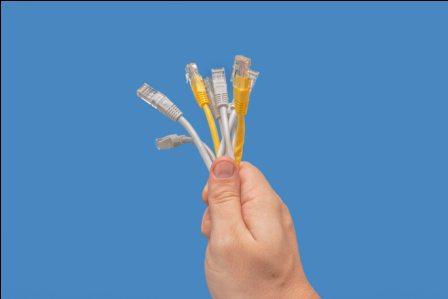ISDN
ISDN stands for Integrated Services Digital Network. It is a circuit-switched technology using the local loop of a PSTN to carry digital signals. It can transmit both data and voice over a digital line. It is a set of communication standards, which can transmit data, voice, and signalling.
ISDN connections provide better speeds and higher quality than traditional dial-up connections. It provides more reliability due to faster speeds and better connections. ISDN is still an important technology for telephone service providers.
History of ISDN
In 1988, the UN-based International Telecommunications Union (ITU) started work on ISDN as a new system for replacing the existing dialup system due to its slow speed and unreliable performance over the long distance. In the 1990s the ISDN 1 was created. ISDN 1 has improved the quality of data communication.
But it is still required to define improve standards for communication between the ISDN of different vendors. Motorola and USRobotics make the transition standards, which is easier for every vendor and then it was launched in the US. Now, DSL has replaced the ISDN. It is still important, where the DSL and cable are not available.
Function of ISDN
It is coverts the PSTN from carrying analogue signals to time-division multiplexed (TDM) signals which allows two or more signals simultaneously in the pair of copper lines or channel. Changing the analogue signals into time-division multiplexed (TDM) results in a higher capacity switched connections. The connection uses (B) channel for carrying voice, data and signalling and (D) channel for call setups. The ISDN connection requires a terminal adapter (TA).
Types of ISDN Interfaces
There are two types of ISDN interfaces: BRI (Basic Rate Interface) and PRI (Primary Rate Interface).
Basic Rate Interface (BRI)
BRI is considered the lower tier of the ISDN services and only provides basic needs at a lower cost. Usually, it is the solution for home users and small enterprise. It provides two 64 kbps B channels and a one 16 kb/s D channel for signalling and initiating the connections.
The total is the speed of the BRI interface of both channel is 64×2+16 =144 kbps. The BRl service operating overhead is 48 Kbps; therefore a digital pipe of 192 Kbps is required. Both B channel and D channel are not dependent on each other, and we can use both channels for a different type of traffic.
Call setup timing for Basic Rate Interface (BRI) is less than a second, ISDN BRI is a better choice for home users where DSL and LAN connectivity is not available. Depending on the cost and requirement, the user can purchase either a single channel of BRI or Bothe channel of the BRI interface.
In case of the single-channel the user can get the speed up to 64 Kbps and in case of using both channels, the user can use up to 128 Kbps speed. This speed is not enough for video streaming, online gaming and much more we are required today.
Primary Rate Interface (PRI)
Primary Rate Interface service is usually used the enterprisers for transfer of more data. PRI has two different standards depending on the country. In North America, PRI presents 23 B channels with 64 kbps and one D channel with 64 kbps including 8 Kbps of PRI service overhead. The total data rate is 64X23+64+8 = 1544 Kbps. In Europe including Australia and some other countries of the world, PRI presents 30 B channels and one D channel.
The total bit rate of both B and D channel including PRI synchronization overhead is 2048 Kbps, including synchronization overhead. Using PRI, the user can use multiple B channels between two points and can get a high-speed data rate with no latency and jitter. The disadvantage of multiple connections is the cost, it can be very costly over long distances
